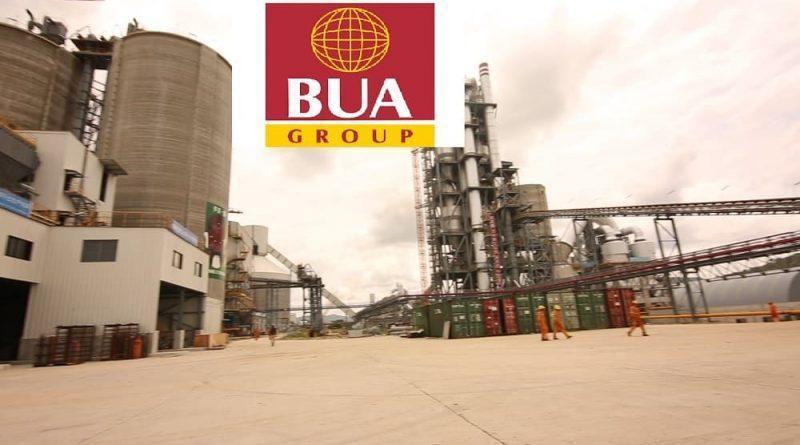BUA Cement – Strong topline growth drives FY 22 earnings by Coronation Asset Management
On Friday of last week, BUA Cement (BUACEMENT) announced its FY 22 audited results after trading (24 February). The company reported EPS growth of 11.3% year over year in Q4 22, which equates to EPS growth of 12.0% year over year in FY 22. Based on the most recent closing price of N99.75, the business suggested a final dividend of N2.80/s, representing a dividend yield of 2.8%. (01 March).
The business recorded double-digit bottom-line growth despite higher production and operating costs, as well as its hefty finance obligations, driven by the elevated pricing environment and stronger volumes. As a result, the actual EPS for FY 22 is 3.72% higher than what we had predicted. The results have received a lackluster response from the market. The stock has increased 1.7% so far this year.
Price growth drives double-digit revenue growth
Revenue for the company increased by 39.7% y/y in Q4 22 (40.3% y/y in FY 22). The actual revenue was in line with what we had anticipated for FY 22 (+0.75% variation). We observe that BUA Cement outperformed its competitors in Nigeria in Q4 22 in terms of sales growth year over year. Although management has not yet given specifics regarding the factors that have contributed to the company’s excellent revenue increase, we feel that strong industry-wide price per tonne rise and a comeback in sales volume growth are to blame. Remember that in 9M 22, revenue growth was a result of both volume and price growth (+16.3% y/y and +20.9% y/y, respectively). During FY 22, we anticipate that the company will have begun to benefit from the additional 3.0MMT Kalambaina line 4 plant that will be operational in January 2022. Nonetheless, it is not improbable that variables like record-high inflation, gas supply disruptions, and high variable production costs slow down the rate of sales volume growth.
EBITDA remains resilent despite surging OPEX
Due to accelerated cost of sales growth (+50.0% y/y), gross margins decreased by 385bps to 44.0% in Q4 of 2012. Cost of Sales pressure persisted, with the primary cause being the jump in Energy Cost (+78.1% y/y), which is a result of the persistent increase in the cost of alternative energy sources. The increased Cost of Sales was also attributed to increases in Quarry Fees and Royalties (+103.8%), Water Supply (+582.1%), and Miscellaneous Production Costs (+96.5% y/y). We take heart in the fact that the company, despite the deteriorating FX situation as it relates to imported inputs, was able to control raw material costs (+9.04% y/y). Yet, as the corporation recorded Gross Profits rise of 28.5% y/y in Q4 22, Revenue growth in absolute terms outweighed Cost of Sales growth.
Despite an increase in operating expenses of 101.3% year over year in Q4 22, EBITDA increased by 15.7%. Costs associated with selling and distribution increased by 129.7% year over year. Distribution costs, which make up around 70% of all selling and distribution costs, increased by 216.9% year over year due to the continued high price of automotive gas oil (also known as diesel) in Nigeria. Also, the expense of advertising and sales promotion increased by 75.5% year over year, adding to the total pressure on OPEX (FY 22: 86.7% y/y).
In order to diversify its energy mix and lessen its dependency on imported coal, low pour fuel oil (LPFO), and AGO, the company, like the rest of the sector, intensifies efforts to cut its energy expenditure by using liquefied natural gas (LNG) from local sources. Unfortunately, persistent LNG supply interruptions continue to work against this goal. Due to this, the business is nevertheless compelled to produce and distribute its products using imported coal and diesel.
We anticipate that as the corporation switches to gas-powered plants, its long-term energy costs will decrease. Yet, given that the business depends on these current fuel sources as a fallback, these expenditures are expected to continue in the near to medium term.
Strong earnings offset heightened finance costs
Despite having a Net Finance Cost of N36.07m in Q4 of 22 and a Net Finance Income of N1.11bn, The company reported a 693.6% increase in Net finance cost to N8.61 billion in Q4 21 for FY 22. This is in keeping with the company’s policy to undo past capitalization of bonds and loan interests on the Sokoto Line 4 Plant and other qualified assets. Nonetheless, Q4 22 saw a 10.8% y/y increase in profits before taxes. Net income increased by 11.7% y/y in Q4 22 due to a stable (-0.5% y/y) tax expense.
Conclusion
The revenue performance of BUA Cement in FY 22 was in line with what we anticipated (+0.75% variation). We are happy with its increased capacity utilisation (57.3%) compared to its industry peers because it reflects in a respectable volume growth and takes advantage of the elevated pricing environment. On the other hand, the high operating expense profile is concerning. Given the disruptions in LNG supply, we anticipate the firm to continue using diesel and coal for its production and distribution operations in the medium term, which will likely put additional pressure on its cost of sales and operating expenses. Recall When plants start to operate, the business will continue to pay off previously capitalized borrowing costs, which we expected to result in growing net finance expenses in Q3 22. This is what we anticipate happening moving ahead until all capitalized borrowing costs for operational plants have been paid.SOURCE: Coronation Asset Management




